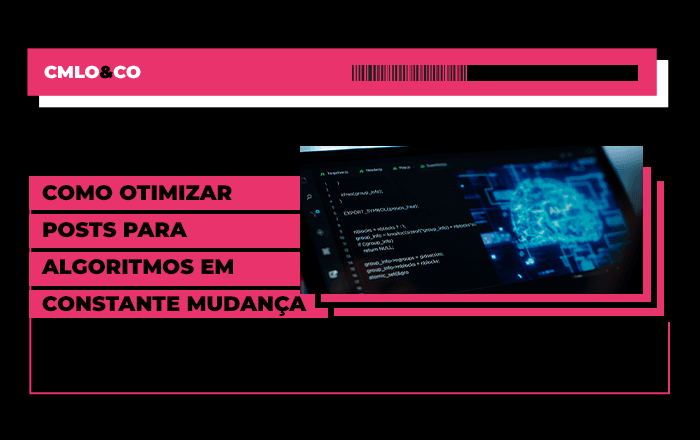In today's corporate world, a company's image is not just limited to the products or services it offers. After all, the way an organization is perceived as an employer can have a significant impact on attracting and retaining talent, as well as on its position in the market.

This is precisely where the concept of Employer Branding comes in, an essential marketing strategy for building a strong and attractive employer brand. Find out more in this article.
What is Employer Branding?
Employer branding refers to a company's image and reputation as an employer.
In other words, it's the way the organization is perceived by current and potential employees, including its culture, values, work environment and growth opportunities.
The aim of Employer Branding is to attract and retain qualified talent by building a brand that is desired by professionals.
Importance
The importance of Employer Branding lies in its ability to attract quality talent and maintain a motivated and committed workforce, which is essential for the success of any company.
But that's not all. Not least because being a strong employer brand goes far beyond attracting the best professionals. Being a strong brand also means increasing the satisfaction and engagement of current employees, reducing turnover and the costs associated with hiring and training new staff.
In addition, having a good reputation as an employer can increase the company's attractiveness to clients, investors and business partners. In other words, it can be the differentiator that sets a company apart from others.
Benefits of Employer Branding for companies
The benefits of a successful Employer Branding strategy are many, including:
- Attracting qualified talent: a strong employer brand attracts the best professionals on the market, increasing the quality and diversity of the team;
- Talent retention: satisfied and engaged employees are more likely to stay with the company in the long term, reducing turnover and the associated costs;
- Productivity and performance: motivated and committed employees tend to be more productive and achieve better results for the company;
- Cost reduction: lower turnover and better talent retention reduce the costs associated with hiring, training and integrating new employees;
- Reputation and brand image: a positive employer brand improves the company's reputation in the labor market, attracting not only talent, but also customers, investors and business partners.
10 actions to build a positive employer brand
Now that we know what Employer Branding is and its importance for business, let's explore 10 practical actions that companies can implement to build a solid and attractive employer brand:
1. Develop a strong organizational culture
A positive and inclusive organizational culture is key to building an attractive employer brand. This includes defining clear values, promoting diversity and equal opportunities, and creating a collaborative and welcoming working environment.
2. Communicating the company culture
A strong employer brand communicates the company's values, culture and unique value proposition to current and potential employees. But not just any old way.
The company's culture must be communicated transparently and authentically, showing the working environment, values, objectives and challenges of the organization. Maintaining transparent and open communication with employees promotes trust and engagement.
3. Turn employees into brand ambassadors
Employees are the first and most influential ambassadors of the employer brand. Therefore, encouraging and enabling employees to share their positive experiences on social networks can considerably expand the brand's reach.
4. Offer professional development and career opportunities
Investing in professional development programs and continuous learning opportunities shows that the company values the growth and career progress of its employees.
5. Encourage teamwork and collaboration
Promoting collaboration and teamwork creates a more dynamic and productive working environment, where employees feel valued and supported.

6. Offer attractive benefits and incentives
Offering competitive benefits such as health insurance, life insurance, meal vouchers and wellness programs demonstrates the company's commitment to the well-being and development of its employees.
7. Promoting work-life balance
Offering flexible working hours, remote working and parental leave policies demonstrates the company's commitment to the well-being and quality of life of its employees.
8. Create a memorable onboarding experience
A well-structured and welcoming onboarding process helps new employees feel part of the team from day one, increasing satisfaction and retention.
9. Promoting diversity, inclusion and a feedback culture in the company
An employer brand that values diversity and promotes an inclusive environment attracts a wider range of talent.
It also regularly asks for feedback and acts on employee suggestions and concerns, demonstrating the company's commitment to continuous improvement and the well-being of the team.
10. Monitoring and adjusting the strategy
Finally, it's worth pointing out that Employer Branding is an ongoing process. Therefore, monitor the effectiveness of the strategy and making adjustments as necessary is crucial for long-term success.
Employer Branding vs. Endomarketing
Although Employer Branding and endomarketing have similar objectives - to promote a positive company image and engage employees - but they differ in their approach and focus.
Employer branding focuses on the company's reputation as an employer, while endomarketing focuses on promoting the company's organizational culture and values among employees.
In other words, Employer Branding aims to attract external talent, while endomarketing aims to engage and motivate internal employees. Both strategies are important and can complement each other depending on the company's objectives.
The role of a marketing agency in building an employer brand
A 360 marketing agency can be a great ally in building an employer brand. Experienced communications professionals can help develop and implement an effective employer branding strategy, ensuring that the company stands out as a strong and attractive employer.
From developing creative recruitment campaigns to creating engaging social media content, a marketing agency can offer the skills and resources needed to boost a company's Employer Branding and attract the best talent on the market.
Conclusion
As we have seen, Employer Branding is more than just a passing trend, but an essential marketing strategy for attracting, engaging and retaining the best talent.
However, building a solid and attractive employer brand is no easy task. On the contrary, it requires an ongoing commitment to organizational culture, professional development, employee well-being and assertive communication.
That's why having professional marketing agency, such as CMLO&CO, can be a smart choice for companies wishing to maximize the benefits of Employer Branding.
With its experience and expertise, CMLO&CO can help companies develop and promote a strong and attractive employer brand through marketing strategies that increase brand visibility, improve public trust and ensure a continuous flow of qualified talent. Contact us.







